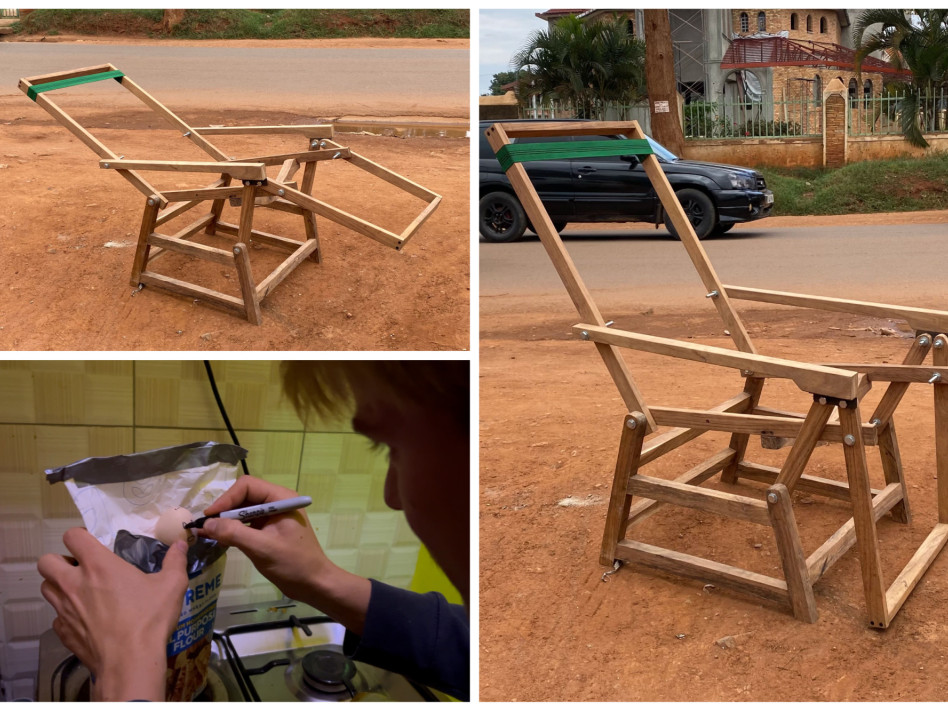It has been a while since our last update and a lot has happened in the meantime. Where we concluded the last update with our four design directions, we took these as a starting point for the ideation phase. After some rigorous brainstorming and a lot of selecting ideas we eventually developed three different concepts from the design directions, which we will share with you in this update.
The first concept came down to a KMC chair. There were a lot of ideas on more space-efficient hospital chairs and beds, but the most valuable one turned out to be both. It’s a zero-gravity chair that mothers can sit- and sleep in and that is adapted to the needs of mothers in the hospitals we’ve been to. However, the big challenge with this idea was how to produce it locally, so that it can be repaired and it doesn’t end up in a landfill after a few months. The first thing we did was buy a cheap zero-gravity chair from a guy that imports them from China. After spending a night in the chair with a DIY preterm baby (a bag of flour and an egg taped to the top) to see what the flaws and advantages where of spending 8 hours in this position, we decided to start doing some research on local materials and production methods.
At the same time, we were working on a second concept: a USSD system that allows mothers to monitor their baby from home and communicate progress to the hospital. USSD is a technology that is being used widely in Africa since companies are able to create very simple applications that are accessible for any phone (not only smartphones) and are not reliant on a internet connection. The interface is very simple so it allows anyone to use it, even illiterate people. At we first we were thinking of a monitoring app for mothers to use after they have been discharged. But then we found out that 71% of all phones in Uganda are simple cell phones, not smartphones. That’s when we came up with the idea of a measuring toolkit that mothers take home from the hospital, which also contains instructions for a USSD system that connects to a hospital database. This technology is very cool by the way, the whole economy is reliant on it, look it up!
The third concept is an educational board for in the neonatal wards of the hospital, to ease some pressure off of the nurses and still educate mothers the right way about KMC. We organised a co-creation session with a few mothers in the hospitals to see how they reacted to some of our ideas and to create a tool together that communicates the right information. Co-creation is very important in Human Centered Design because by allowing your users to design themselves, you make sure that the solution will fit their context.
As of now, we are finishing up the first prototype of the KMC chair. The building took a little longer than expected since we hadn’t calculated the amount of time it would take to gather the right parts for the chair. There is little to explain how difficult this can be in low-resource settings, but it mainly comes down to this: you need a guy for everything. Even if it is as little as a screw in the right size, there is no such thing as a Gamma here and you will need to throw yourself in the deepest corners of the local markets to find what you need. But we managed to build the chair with the help of local craftsmen and we will finally put it in one of the wards this week! The other two concepts are now in the hands of DwB for further development. But in the next update we will share with you the findings of our validation and hopefully the plans for mass-production.

